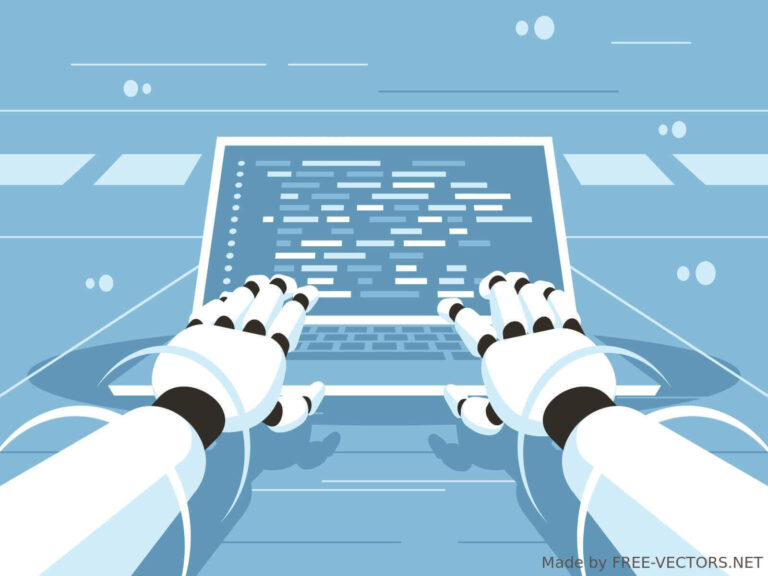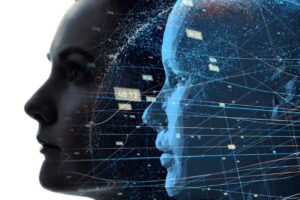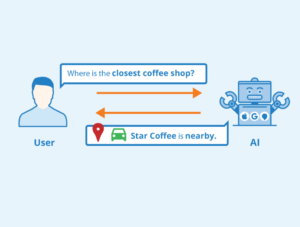Democratization of Artificial Intelligence

The democratization of artificial intelligence puts AI technologies into the hands of everyday people with little computer education or even technical knowledge.
This democratization movement offers many benefits. It allows lots of ordinary people to experience and leverage the many features of artificial intelligence, such as improved decision-making and automation, without needing to be a computer guru.
Individuals and organizations are discovering numerous ways to either democratize AI or leverage democratized AI in their markets. And this post sheds light on how it’s happening.
What Is The Democratization of AI?
The democratization of AI refers to the process of making artificial intelligence accessible to a broader audience and not just to specialized experts. Significant strides have been made to break down the traditional barriers associated with artificial intelligence in recent years, thereby making numerous AI technologies accessible to more individuals and organizations.
The democratization of AI involves providing user-friendly tools, educational resources, and platforms that don’t require extensive technical expertise. Numerous open-source initiatives, such as TensorFlow and PyTorch, have also been quite helpful through collaborative development and knowledge sharing.
Furthermore, low-code and no-code solutions have enabled all types of individuals from diverse backgrounds to design and implement AI applications without solid computer or programming skills.
The AI democratization process includes multiple goals and methods, which can sometimes conflict. Plus, there are other challenges as well. However, the benefits of AI democratization outweigh these challenges.
Benefits of AI Democratization
To get a better understanding of why AI democratization is necessary, here are some of its key benefits:
- Increased Innovation: As artificial intelligence becomes more accessible to the general public, the doors open for a wider range of people to develop new ideas and solutions. Since the use of AI is no longer limited to big companies and researchers, democratization allows a broader range of individuals and organizations to engage with and contribute to AI development. And such a diversity of perspectives boosts innovation, leading to the development of novel solutions across various industries.
- Improved Productivity & Creativity: AI can make it easier to automate repetitive tasks and this can free up valuable time for people to focus on higher-level work. Being able to focus on higher-level work, of course, leads to increased productivity and efficiency in whatever you do. Democratizing AI tools also empowers individuals to explore different creative applications for artistic expression, thereby contributing to more innovation in fields such as art, music, and design.
- Better Decisions & Problem Solving: AI can quickly analyze vast amounts of data and provide insights that inform better decision-making, way beyond most human analysts. Such capabilities can lead to more informed choices in organizations of all sizes, including in business, government, and personal lives. Democratized AI makes the provision of insights from complex datasets easy and thus users from various domains can apply its techniques to address specific problems in their specific fields of work.
- Increased Accessibility: In addition to becoming more accessible to everyday people, AI democratization can further make AI tools and resources more accessible to people with disabilities. This allows everyone to leverage AI tools, fostering a more inclusive environment.
- Economic Growth: AI democratization can help to drive economic growth by creating new job opportunities and businesses. This happens because more small and medium-sized enterprises (SMEs) can harness the power of artificial intelligence to improve their operations and compete with larger companies, thereby driving economic growth.
- Cost-Effective Solutions: AI democratization lowers the entry barrier through open-source frameworks and low-code/no-code tools. This enables organizations with limited resources to develop and implement AI solutions without investing substantially in upfront infrastructure costs.
- Empowerment of Non-Technical Users: Low-code and no-code AI platforms are empowering non-technical users to create, deploy, and manage highly technical applications that would otherwise not have been possible. Hence, professionals in fields from marketing to finance and healthcare are benefiting from AI without explicit computer science training.
How AI Democratization Is Happening
The democratization of AI is unfolding through various exciting mechanisms that all aim to make artificial intelligence more accessible, user-friendly, and inclusive in their own ways. Here are some of the key ways in which AI democratization is happening:
- Low Code & No Code Solutions: Low-code and no-code tools are user-friendly platforms that enable users to create all sorts of applications using templates, drag-and-drop functionality, and visual workflows. While low-code tools require some level of technical understanding, where the user needs to customize some code at each level, no-code solutions work completely without code input from the user. Low-code and no-code AI platforms aid in rapid development and innovation for non-technical users.
- Startups: The startup ecosystem is also involved in the democratization of AI, as startups innovate to create novel solutions to old problems. This, in turn, creates competition and leads to a better market with better products for users.
- Cloud-based AI Services: Cloud service providers like AWS, Google Cloud, and Azure have leveled the playing field for any company that wants to get into artificial intelligence. These days, you don’t need expensive hardware or infrastructure requiring huge upfront investments to run AI systems. You can easily sign up for a range of enterprise-grade AI services and only pay for the resources that you actually use.
- Education & Training Initiatives: The availability of information regarding artificial intelligence is also helping to democratize it. From numerous articles and books about AI to online platforms that offer various courses and training boot camps, as well as online forums and various helpful communities, there is enough support for individuals seeking to learn or work with AI.
- Open Source & Collaboration: Open-source communities are also contributing a lot to the democratization of AI. For instance, popular AI tools, such as PyTorch and TensorFlow are all open-source projects.
- Auto Machine Learning: Platforms like Kaggle and Huggin Face make it easy for anyone to quickly create machine learning models with just a few clicks.
The Challenges
While the democratization of AI offers numerous exciting benefits, it also creates challenges that need to be addressed. Some of these key challenges include:
- Dependency & Skill Dilution: As more and more people rely on artificial intelligence to get work done, there is the danger of a gradual degradation of purely human skill sets in various industries.
- Data Privacy Issues: Artificial intelligence often involves vast amounts of data and ensuring the privacy and security of data with non-technical users can remain a challenge. So, striking a balance between data accessibility and protection is essential for the responsible democratization of AI.
- Misinformation: Human reliance on AI systems is always threatened by misinformation that can come in various forms, such as biased training, poisoned data, and other model hacks.
- Danger of Auto-ML Systems: Platforms like Kaggle and Huggin Face are making it easy for anyone to build AI models. But the question remains about the unforeseen circumstances and their consequences when non-technically trained users build such complex systems and something goes wrong.
How To Transform Your Company
AI Democratization within a company is about making artificial intelligence more accessible and usable by a broader range of employees – and not just by the data scientists and engineers.
If you are looking to transform your company or team by employing AI democratization principles, then here are some guidelines to help you along the way.
- Create Awareness and Understanding: Start by raising awareness in your company about the potential of AI and its many benefits. Consider providing educational resources, a seminar, online courses, or other training methods to help your employees understand the basics and potential of artificial intelligence in your business or line of work.
- Establish Cross-Functional Teams: Create teams that include individuals from different departments – such as marketing, sales, finance, and operations. Having such a diverse team brings various perspectives to light and ensures that your AI solutions will align with the goals of different departments in your company.
- Identify Use Cases and Business Problems: Your teams have to collaborate and identify business problems or use cases where AI can add value to your enterprise. This collaboration ensures that the AI initiatives are practical and aligned with your company’s strategic objectives.
- Implement User-Friendly Tools: Try to implement your AI initiatives with user-friendly AI tools or platforms that don’t require extensive technical expertise. Low-code and no-code solutions, for instance, can allow employees with varying technical backgrounds to easily interact with and leverage AI technologies.
- Encourage Experimentation and Prototyping: Try to foster a culture of experimentation in your company by encouraging your team members to prototype AI solutions for their specific tasks or projects. You can provide a sandbox environment where anyone can create and test solutions without the fear of destroying your company’s systems.
- Integrate AI into Existing Workflows: It’s advisable to make your AI solutions an integral part of your existing workflows rather than to create standalone AI applications. Integrating your solutions this way ensures that employees can easily adopt your AI tools into their daily work routine, with little or no friction.
- Measure, Iterate, Improve & Communicate Impact: Establish key performance indicators (KPIs) to measure the impact of your AI initiatives. Then gather feedback from your employees and iterate with improvements. Regularly communicate the successes and benefits achieved through your AI democratization project, including the values it is bringing to your company.
- Foster a Knowledge-Sharing Culture: Try to get your employees to share their AI-related experiences, successes, and challenges through an online platform, a forum, an internal newsletter, or by having regular meetings.
AI Democratization Resources
- Google AutoML: https://cloud.google.com/automl/
- Amazon SageMaker: https://aws.amazon.com/sagemaker/
- Microsoft Azure AI: https://azure.microsoft.com/en-us/products/machine-learning/automatedml/#features
- Clarifai: https://www.clarifai.com/
- Keras: https://keras.io/
- Fast.ai: https://www.fast.ai/
- Kaggle: https://www.kaggle.com/
- H2O.ai: https://h2o.ai/
- AI Commons: https://ai-commons.org/
- AI Business School: https://aibusinessschool.com/
- Tensorflow: https://www.tensorflow.org/
- PyTorch: https://pytorch.org/
- HuggingFace: https://huggingface.co/
Conclusion
You have seen the various ways that the democratization of AI is unfolding, the challenges it is facing, and the ways that you and your company can get in on the action.
The democratization of AI is an ongoing process that continues to expand into various industries and promises a brighter and more equitable future for all. It is not just a technological evolution but a societal transformation that you too can become a part of.





